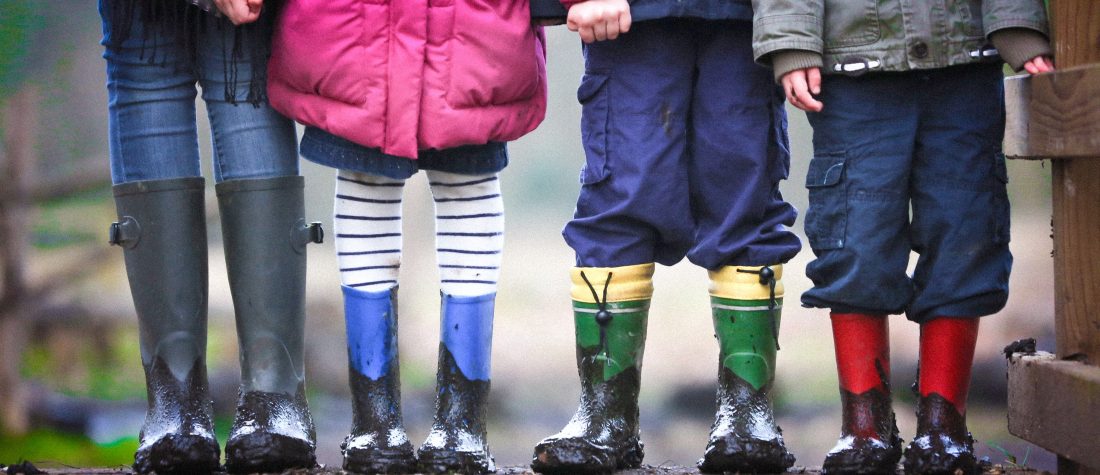The pandemic is mostly behind us, but the restrictive measures taken by governments worldwide had a severe impact on young people, leaving in their wake an unprecedented child and adolescent mental health crisis. According to a meta-analysis of studies that included more than 80 thousand youth globally, the prevalence of depression and anxiety during Covid-19 has doubled, compared with pre-pandemic estimates. A staggering one in four youth globally are experiencing clinically elevated depression symptoms, while one in five are experiencing clinically elevated anxiety symptoms.
Even before the Covid-19 pandemic, data from the U.S. National Survey of Children’s Health showed that as many as 1 in 6 children had a mental health disorder though approximately half of them were not being treated for it. The pre-pandemic prevalence data for Europe is similar.
Not surprisingly, U.S. surgeon general Dr. Vivek H. Murphy recently warned of the “devastating” impact the pandemic had on young people in the United States. Similarly, a 2020 International Labour Organization (ILO) report found the impact of the pandemic on young people in Europe to be “systematic, deep, and disproportionate.” European Parliamentary Research Service sounded its own alarm about the state of mental health in the EU, which was a cause for concern even before the coronavirus hit. It deteriorated further during the pandemic when the ‘Health at a Glance: Europe 2020’ report found evidence of higher rates of stress, anxiety, and depression, with the young showing to be disproportionately affected.
Addressing this global child and adolescent mental health crisis that’s bound to affect a whole generation is essential. The American Academy of Pediatrics, the American Academy of Child and Adolescent Psychiatry, and the Children’s Hospital Association have all cited dramatic increases in emergency room visits for pediatric mental health problems, including suspected suicide attempts. The scale of the crisis prompted some observers on both sides of the Atlantic to refer to it as a ‘second’ or ‘silent’ pandemic, not physical, but mental—a pandemic of stress, anxiety, and depression.
The prevalence of social media doesn’t help children’s wellbeing. On the contrary, far from assuaging loneliness, apps such as TikTok or Instagram, whose use during Covid exploded, are a leading factor in increased anxiety, depression, and other mental health issues among today’s youth. Clearly, children and teens need other outlets—and they need to develop effective coping skills.
With the face masks still mandated in some schools, many pandemic protocols in place, and decreased socialization still a fact of life, children whose mental health has been affected by life under Covid are not bouncing back as quickly or easily as we’d hope. Between the explosion of tics and tic-like outbursts, especially among teenage girls, and stories of children’s social skills regressing as a result of isolation from their peers, it’s clear we have to do something while we can still help the many young people who need a course correction.
In my practice as a mental health service provider in Washington, D.C., I work with people who are experiencing anxiety, depression or post-traumatic stress disorder. Helping them cope with their feelings in healthy, productive ways is central to what I do. One step I often suggest is for the young person to assemble a coping tool box, which is literally a physical container filled with items that can help children soothe themselves in a time of panic or anxiety. It allows them to practice mindfulness – focus on the present, on what they can control and take in with their senses.
Coping toolboxes are particularly helpful for young people dealing with stress. To make them effective, it’s important that children take part in assembling them themselves. That will give them a sense of comfort and control, and they will see the coping-toolbox as something that is uniquely theirs.
Ideally, the box would include a number of everyday items, but each with a specific sensory role to play: A stuffed animal or a weighted cushion would support the body’s awareness of itself; a fidget spinner or a stress ball to squeeze will keep the hands occupied; a pinwheel or a bottle of bubbles for relaxation and breathing; something that smells good, e.g. a calming oil, for olfactory sensory support; a jump rope or a book of yoga poses that requires physical movement; noise canceling headphones and a favorite playlist; a puzzle or a book that requires thought or concentration; something for oral motor sensory support, such as sugar free chewing gum; something visually soothing such as an hourglass—or even an eye mask to block everything out in order to concentrate on their calming efforts.
These coping techniques are not exclusively for children. They can be adapted or transferred into adulthood. But children have a special need to tap into all five senses, especially now, as the pandemic has cut so many sensory experiences and other opportunities for enrichment out of their lives.
Many of these items are very basic and easily obtainable; they could be found in people’s pockets or bags, regardless of whether they struggle with anxiety. And that’s the beauty of it – many already have the items needed to self-soothe and use them without realizing they’re doing it. But for those for whom keeping panic at bay and calming down doesn’t come naturally or who require more effort to relax, these boxes and the items in them can be a godsend.
Mindfulness, or grounding techniques, are used to bring a person to the present moment by turning them away from a panic-inducing fear, distracting from an intense thought or an intrusive memory. Deliberate breathing exercises, a walk, or chewing gum can all do the trick. With gum, for example, I would direct a client to engage all five senses in the activity: pay attention to the color, texture, the taste of it, the act of chewing itself, the smell of gum, and even how it feels in the mouths.
Focusing on the moment, on its every aspect, is what helps reduce stress. It’s a skill that can last a lifetime, and children who lived through the sensory and social deprivation of the pandemic need to master it. A recent study found that young people who had no exposure to normal, everyday, anxiety-provoking situations, such as going to school and negotiating all the social situations that come with it, were more fearful. The pandemic robbed young people of the opportunity to confront and overcome normal childhood fears and develop healthy coping mechanisms, but we can still help them master mindfulness.
Alysha Tagert, MSW, LICSW, is an American mental health service provider who specialises in anxiety, depression, grief and loss, trauma and PTSD


